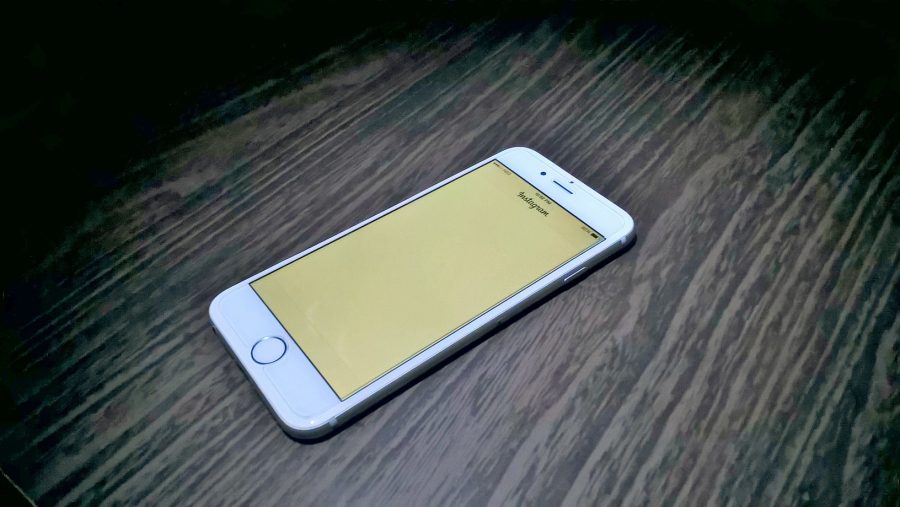Confronting an online menace
While teenagers are increasing their online presence, high school administrators are sometimes ill-equipped to deal with the more frequent instances of cyberbullying that crop up among students.
Cyberbullying has increased in prevalence with the proliferation of social media outlets such as Instagram and Snapchat.
She had never imagined that she would be targeted. But when Amanda Parsons ’18 checked her Instagram at the start of summer last school year, she immediately knew that something was wrong.
“[The bullying] really started last summer, when some of my ex’s friends [who were also my friends] got mad at me for leaving them,” Parsons said. “So they posted bad things about me on Instagram.”
Parsons, along with a third of all U.S. teenagers, is a victim of cyber-bullying, which occurs whenever someone harasses, intimidates or makes fun of others online, according to cyberbullying.org. In Parsons’ case, the ones she was close with were able to strike deeply and catch her off guard.
“[My former friends] really threw me off when they started saying all those mean things,” she said. “I really liked hanging out with them and I confided lots of stuff to them.”
While the abuse started on Instagram, it quickly spilled out into school when summer ended.
“People walk by me in the hallways and say negative things, or even come up to my face [and say them],” Parsons said.
Three months after the bullying began, she took her problem to her counselor, and then to the administration.
According to junior and senior student dean Justin Colbert, however, cyber-bullying is often perpetrated when school is out, away from the watchful eyes of school staff, so it can be difficult to address. This sets cyberbullying apart from “old school” bullying.
“The problem with cyber-bullying is that it doesn’t end at the school day. It can continue after the school day ends, and even when school is out, such as during summer break,” he said.
When dealing with bullying incidences, vice principal Luke DeVries first ensures that the student’s educational experience is not affected.
“We would ask, ‘Is there a special threat towards the school? Is it impacting the student’s day [at school]? Is it making the student feel unsafe at school?’” he said.
This interaction, however, is where the administration can fall short, according to Parsons.
“I took [my problem] to the administration, and Mrs. Abraham [said], ‘I’ll talk to the people who are doing this,’” Parsons said. “But nobody was punished, and since I don’t have any proof that people were saying stuff to me in the halls, [the administration] said that they couldn’t do anything [about what was happening in school].”
Assistant Principal Molly Abraham declined to comment on Parsons’ specific case, but said, “Every circumstance is different, but our goal is always to have students understand the hurtful and harmful nature of cyber-bullying and to have it stop. Any student who feels they are being bullied is encouraged to come to the administration for help resolving the issue; school should be a safe place for everyone.”
After the victim reports the incident, the administration intervenes and attempts to develop an appropriate response with the given evidence. This task usually falls to Colbert.
“We take the necessary steps and bring in the bully and his or her parents,” Colbert said. “A lot of the time there would be potential consequences depending on the severity [of the offense]. We may also supplement that [consequence] with an educational piece so that they don’t repeat the same behavior.”
The hostility against Parsons initially diminished with the result of the administration’s intervention, but it has been recently revived by the same group of people.
“They started doing it again to me and to other people as well,” she said. “[The attacks] got worse, not really [for] me but [for] other people.”
In light of these developments, Parsons advises anyone who is experiencing cyberbullying to deal with the problem immediately.
“Get proof and report it as soon as possible,” she said. “Also, get a support system. It’s always harder to face a problem alone. I have my parents and my friends on my side, so I know that I’m still in a good place.”
Parsons also notes that the lack of a support system may also be a factor in driving people to disparage others.
“A lot of issues with bullies is that they’re not getting enough attention, which causes them make others feel bad so that they can feel good about themselves,” she said.
Parsons believes sometimes it’s best to just ignore the bullying to solve situations like hers that had limited solutions. “I don’t let [the harassment] get to me personally; I find it to be sad in a way,” Parsons said. “I don’t know why they would do this to me, but I’m not going to let them [bring me down].”
Your donation will support the student journalists of West High School. Your contribution will allow us to purchase Scholarship Yearbooks, newsroom equipment and cover our annual website hosting costs.

George is on his third year on WSS as a senior. He is interested in video production, livestreaming and anchoring as a member of broadcast staff. He eats,...




